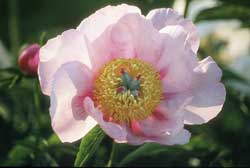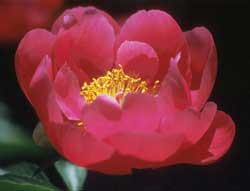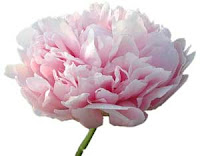montée de pivoine présentée au FESTIVAL DE LA PIVOINE de QUÉBEC
par YVON ALLEN
As a non-profit organization, our mission as a Society is to promote cultivation and enjoyment of peonies in Canada.
- Home
- About CPS / SCP
- AGM 2016
- Events / Événements
- You are Invited to our Open Gardens! Visitez nos jardins de pivoines! 2016
- Seed Exchange graine de change / Propagation
- Root Sale
- Vente racine
- Origin and micropropagation
- Flower Forms In Peonies
- Peony Bloom Date Project
- Showing Peonies
- Pests and Disease
- Planting/ Care/Drying/ Cutting /Storing
- Hybridizing Peonies
- Dividing Your Peonies
- Peony Questions Answered
- Products/ Books On Peonies
- Suppliers and Group Links
- Strategic Review
- Contact Us / Membership Form / Constitution / By Laws
Sunday, September 30, 2012
Saturday, September 29, 2012
Peony Flower and its Meaning
All About the Peony Flower
The Greek story goes that the Greek god of medicine Asclepius had a student named Paena. But, the student was actually better than the master, so the teacher became jealous of him. The story goes that Zeus actually had to save the student from the teacher’s wrath by turning him into a flower. The flower has a floral meaning of shame, but it can also signify a happy marriage and a happy life.Description of the Peony Flower
The peony is a flower that belongs to the genus Paeonia. This is a flowering plant family that has about 25 to 40 species in it. For the most part, all of the plants in this family are herbaceous perennial plants and they grow in Asia, parts of Southern Europe, and North America. The peony is a plant that will grow up to about 5 feet tall. A very large flower, can be extremely fragrant. You will find that these flowers range in color from white, red, yellow,corals and purples, and they will bloom in the late spring and in the early summer.Uses for the Peony Flower
The peony works great for arrangements. These flowers are showy and they really look great so you will see that the flowers are really great to add to arrangements or to star in an arrangement. Other people just want to plant the flowers so that they have a great flower that is big and that will look great in their yards. This is a great landscaping flower in all the great colors that it comes in.Friends of the Experimental Farm
Introduction to the collection
There are approximately 420 peony plants throughout the Central Experimental Farm, with about 250 different cultivars and hybrids
The Ornamental Gardens has 12 beds with 350 peonies.
Others are located in the Arboretum, the Macoun Garden, the Rock Garden, the long perennial beds and some yet to be identified are in the Nursery.

There are approximately 420 peony plants throughout the Central Experimental Farm, with about 250 different cultivars and hybrids
The Ornamental Gardens has 12 beds with 350 peonies.
Others are located in the Arboretum, the Macoun Garden, the Rock Garden, the long perennial beds and some yet to be identified are in the Nursery.
| |||||
Selections from the Peony Collection at the
Central Experimental Farm
photos by Mary Pratte unless otherwise indicated
'Aerie'
|
 | ||
'Arcturus'
|
 | ||
'Better Times'
|
 | ||
'Bordeaux'
|
 | ||
| 'Centennial' Photo by Richard Hinchcliff |
 | ||
'Clair de Lune'
|
 | ||
'Constance Spry'
|
 | ||
'Do Tell'
|
 | ||
'Felix Supreme'
|
 | ||
'Firelight'
|
 | ||
'Gay Paree'
|
 | ||
'Golden Bracelet'
|
 | ||
| 'Illini Belle' Photo by Richard Hinchcliff |
 | ||
| 'Jewel' Photo by Richard Hinchcliff |
 | ||
'June Rose'
|
 | ||
'Le Jour'
|
 | ||
'Moonrise'
|
 | ||
'Mrs Euclid Snow'
|
 | ||
'Nathalie'
|
 | ||
'Pico'
|
 | ||
'Pink Cameo'
|
 | ||
'Primevère'
|
 | ||
'R.A.Napier'
|
 | ||
| 'Red Charm' Photo by Richard Hinchcliff |
 | ||
'Requiem'
|
 | ||
'Rose Diamond'
|
 | ||
'Schwindt'
|
 | ||
'Souvenir de Louis Bigot'
|
 | ||
'Sword Dance'
|
 | ||
'Victoria Lincoln'
|
 | ||
'Westerner'
|
 | ||
'White Cap'
|
 | ||
|
|
Fleur gâteau est de 3,56 mètres
Voici 3 belles photos de RITA SHELLARD, J'ai 18 photos de disponible et 23 peintures de sa collection, c'est un très beau travail
martinus
directeur pour le Québec
noter
l'image de la fleur gâteau est de 3,56 mètre, nous aurons un gâteau diamètre 14 à Rosemère à
CANADIAN PEONEY ANNUEL Montrez un enregistrement ginnes
Soumis par Martinus Mooijekind
Friday, September 28, 2012
Peonies: More than a pretty face
Start planning for spring blooms
By The Niagara Falls Review (Theresa Forte) |
Old-fashioned peonies fit the bill. While your grandmother may not have been a gardener, I'll bet she knew a simple peony division, planted in decent soil and in a sunny location, would bloom for generations. Peony divisions were routinely given to family members when they moved away - the roots were planted in distant gardens as a reminder of home.
In Gardening with Heirloom Plants, David Stuart notes the common herbaceous peony, Paeonia lactiflora, grew in China by 1100 AD. One 16th-century nursery was known to have stocked 30 plants. Europeans crossed P. lactiflora with P. officinalis and by the 1850s, there were endless gorgeous flowers, like the double white peony, Festiva Maxima (dating to 1851) which is still sold today.
Peonies have thick, fleshy roots that will eventually stretch deep into the ground. For best results, plant them in a spot with deep, well-drained, humus-rich soil. Choose their site carefully, peonies resent being moved - I once killed a perfectly content tree peony by moving it, on a whim, to a different spot in the garden.
Peonies can take a year or two to settle in before blooming. If you want instant colour (and less fuss) purchase potted peonies already in bloom from your local garden centre in the spring. Alternately, with patience, you can start the plants yourself, either from divisions from a friends' garden or by purchasing rhizomes. The best time to plant rhizomes (or to divide peonies) is in the fall.
Double-flowering peonies need staking. During spring rainfall - and it always rains when the peonies are out - the petals soak up water like a sponge. Without fail, the waterlogged flowers flop unceremoniously on their neighbours, or even worse, collapse over the edge of their supports. It's not pretty, but it does give you a good excuse to cut the flowers and enjoy them inside.
To prevent disappointment and save on the bother of staking peonies, I recommend trying the single-flowered varieties. While individual peonies only bloom for about three weeks, you can enjoy peony flowers over a long period by choosing early, mid-season, and late bloomers for your garden (see sidebar). They make wonderful cut flowers.
Peonies die right back to the ground over the winter, leaving an opening that is ideal for early spring bulbs such as crocus, grape hyacinth, mini-daffodils and species tulips (all easy-care choices) in your border. Remove all dead leaves in the fall to help prevent disease problems.
Good companion plants include lady's mantle perennial geraniums, foxglove and old-fashioned roses. Include plantings of autumn-blooming monkshood and Japanese anemone to make the most of the beautiful fall foliage on the peonies.
- - -
WORRIED ABOUT ANTS? To make sure cut peonies are ant-free, cut the flowers just as the buds start to open. Plunge the stems, bud and all, in a bucket of water for a few minutes and gently shake dry. Place the flowers in a large vase indoors to open. To extend their season, cut peony stems can be stored in the fridge for several weeks before bringing them into a warm room to open.
Tuesday, September 25, 2012
Tree Peonies
- Tree peonies have been real lifesavers for this enthusiast
- By Lorraine Hunter for Canadian Gardening
The blanket of tree peonies that covers John Tai's front and back gardens does more than beautify his property. He credits his obsession with these colourful flowers with helping him control depression.
“I got into growing peonies for my physical and mental health, mostly mental. I love them,” he says simply. “Because the flowers are beautiful they give me a lot of joy and a good time in spring, summer and fall. Growing them gets into your veins.”
Describing himself as “the original Wild Man of Borneo,” John was born in the Malaysian state of Sabah (formerly British North Borneo) 80 years ago. He immigrated to Canada from Singapore in 1972.
John had suffered from bouts of depression for most of his adult life. Back in the early 1950s, while he was visiting Singapore, a Roman Catholic priest suggested John take up a hobby to combat the depression and a Belgian bishop recommended gardening. In 1993, during a particularly bad time-“I was drinking too much, out of a job and beginning to lose myself,” the former cook and waiter recalls-John came across an article about a huge tree peony festival held in Luoyang, in Henan Province, in China Pictoral magazine.
Looking at pictures of a red-and-white-coloured peony called ‘Eriqiao' (‘Twin Beauty' is the English name), something clicked and he remembered the advice of his old friends. “I pray for [my advisors] almost every night,” he says, because growing tree peonies has given him a new lease on life.
A few years ago, John got to visit Luoyang in late April-peony season, when more than one million peonies, including 500 cultivars, bloom.
John didn't know where to purchase Chinese tree peonies when he started out, so he bought four Japanese ones from a local supermarket in the west end of Toronto.
He continued to acquire more Japanese cultivars each year and was finally able to obtain three Chinese tree peonies from the West Coast through his friend and mentor John Simkins, founder of the Canadian Peony Society. Only one of the trio survived. A Canadian Fruit Inspection Agency ban on importing rooted plants from China because of an infection makes it impossible to import them directly.
“You can import them from Europe, Japan or the U.S. and pay steep prices, and you may get the plant you wanted or not-and it may or may not be healthy,” says John Tai. Commercial nurseries get a much better quality tree. “It's best to go to Canadian sources in May to see the plants in bloom, put down a deposit on the ones you like and make the final purchase in September.”
Tree peonies are usually sold only in spring. “I don't understand why,” says John, who recommends planting them in mid-September. Install bare-rooted specimens as soon as you get them. But, if they're in containers and potted carefully, you can plant them in spring, says John.
“The Chinese traditionally plant herbaceous peonies on the 15th day of the seventh lunar month-mid-August-and tree peonies on the 15th day of the eighth lunar month-mid-September,” he says.
Today, John has about 200 tree peonies, both Japanese and Chinese and other hybrids. (He also grows herbaceous peonies, delphiniums, roses, shasta daisies and foxtail lilies.)
Both herbaceous and tree peonies (which grow on woody stems to a height of one metre or more) revel in climates with cold, snowy winters and are hardy to Zone 3. John leaves most of his out in the open without protection but mulches any that are not deeply planted (i.e., you can see their roots) with a 10-centimetre-deep mixture of soil and manure.
The biggest mistakes you can make when growing peonies, says John, are overwatering and/or over-fertilizing. “They don't need to be coddled. In fact, a tree peony can live for more than 100 years if you take care of it properly.”
John is starting to propagate known tree peony cultivars from China, experimenting with seeds, division and grafting. He hopes to build a small hobby business for other people who would like to grow his seedlings in their backyards instead of depending on foreign imports for selection.
So what began as a form of therapy for John has not only become a positive obsession but may also benefit other tree peony lovers.
PLANTING TIPS
Place each tree peony in a hole that's 60 centimetres deep by 60 centimetres wide. Put a handful of bone meal in the hole and plant the bud union 10 to 15 centimetres below the soil. Fertilize with compost or mix and enrich them with additional bone meal. Firm the soil and water well. Plant them at least 1.2 metres apart.
When John Tai visited China, he discovered that tree peonies will grow in just about any soil as long as it's not waterlogged; slightly acidic or neutral soil is best.
Sunday, September 23, 2012
Atelier sur la division et la plantation des pivoines
Nous avons eu un atelier sur la division des pivoines et la plantation
de 16 iitoh offert par SERGE FAFARD et 10 ARBUSTIVES offert par MARTINUS
en compagnie de la veuve et la famille du fondateur du JARDIN BOTANIQUE DANIEL A SEGUIN de ST-HYACINTHE une autre plantation de herbacés auras lieu en mars 2013
submitted by M Mooijekind
de 16 iitoh offert par SERGE FAFARD et 10 ARBUSTIVES offert par MARTINUS
en compagnie de la veuve et la famille du fondateur du JARDIN BOTANIQUE DANIEL A SEGUIN de ST-HYACINTHE une autre plantation de herbacés auras lieu en mars 2013
submitted by M Mooijekind
Subscribe to:
Comments (Atom)















